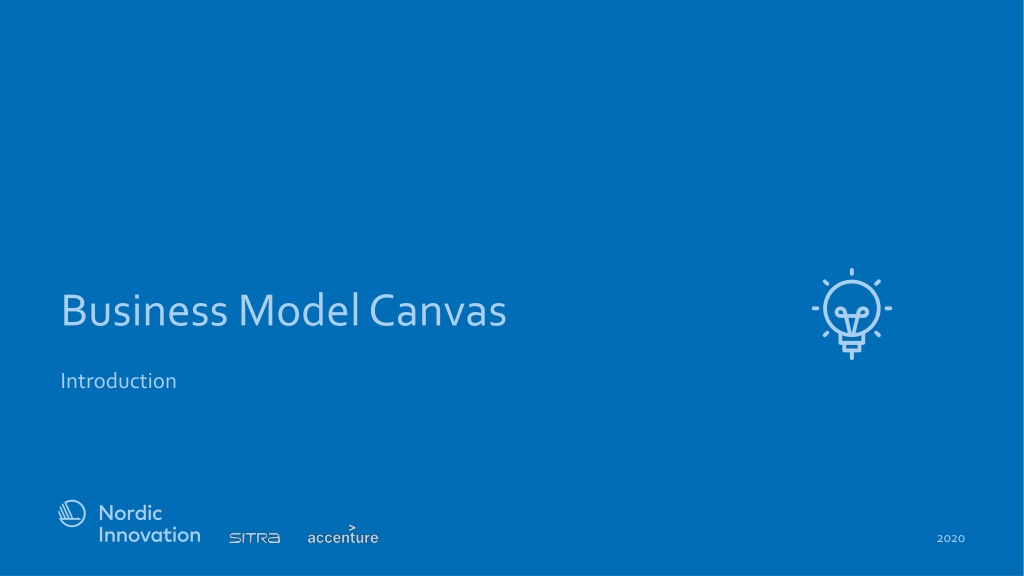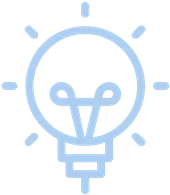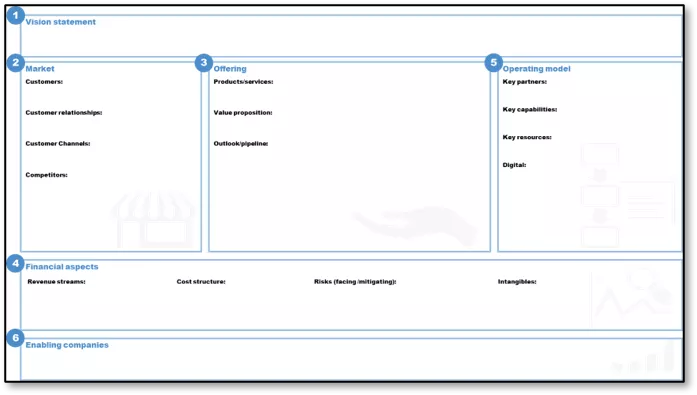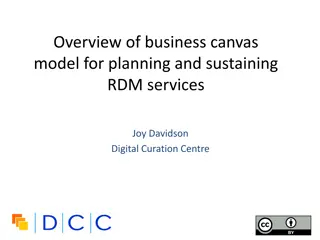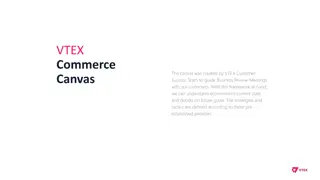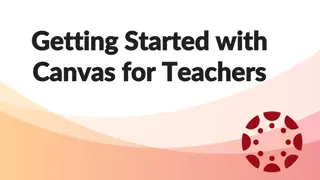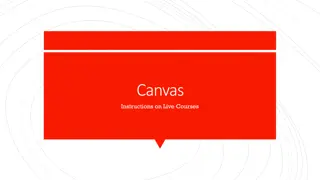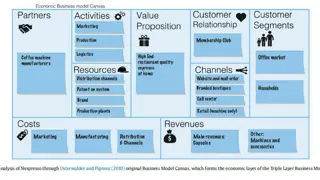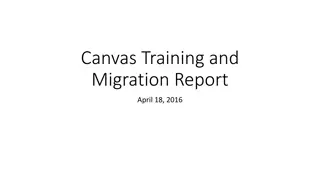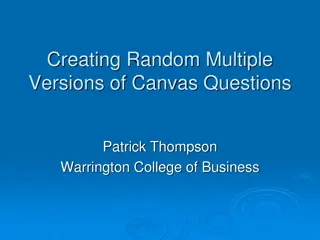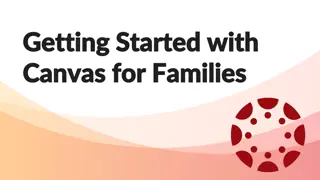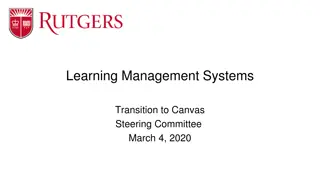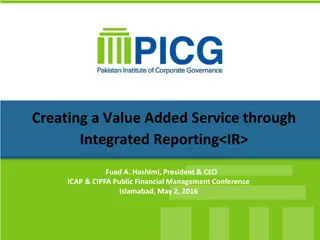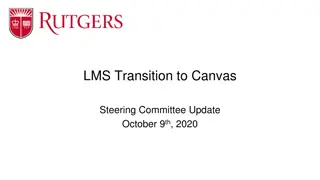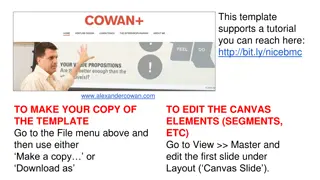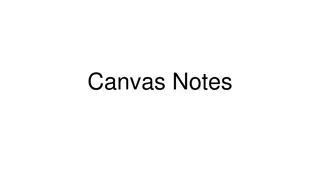Business Model Canvas Introduction 2020
The purpose of the business model canvas tool is to help you crystallize your circular business idea by reflecting on key building blocks including value proposition, infrastructure, customers, and financing. It provides instructions, supporting materials, and an illustrative example for creating a vision statement, defining market offerings, operating models, and more.
Download Presentation

Please find below an Image/Link to download the presentation.
The content on the website is provided AS IS for your information and personal use only. It may not be sold, licensed, or shared on other websites without obtaining consent from the author. Download presentation by click this link. If you encounter any issues during the download, it is possible that the publisher has removed the file from their server.
E N D
Presentation Transcript
Business Model Canvas Introduction 2020
Business model canvas Introduction The purpose of the business model canvas tool is to help you crystallize your circular business idea by reflecting on its key building blocks, including your value proposition, infrastructure, customers and financing. Purpose Illustration of the tool 1. 2. Vision describe your long-term vision and wanted position Market - reflect on customers, the required customer relationships, the channels you could use to reach them and what competition you will see on the market. Offering - detail what the solution you want to offer could look like, what the concrete value proposition to your customers is and draft an outlook on how it could be developed further or what other solutions could be connected with it. Financial aspects use the value case tool to assess value levers per circular sub-model. Provide a high-level estimate on revenues, costs, and investments. Also include reasoning on risks and intangibles Operating model reflect on key partners, capabilities, resources and digital technologies needed to operate your circular business idea Enabling companies list companies that can support the development of your circular business model, such as financiers and technology providers 3. Instructions All playbook chapters + supporting tools 4. Supporting materials 5. 1. Why circular economy? 2. What opportunities exist? 3. Which capabilities are required? 4. Which technologies can support? 5. How to design the transformation journey? 6. Illustrativeplaybookpages pleaserefer to the entirechapters for support.
Business model canvas Example Vision statement Optimised use of equipment capacity in an easy and cost-efficient way Market Offering Operating model Customers: Manufacturing companies Individual consumers Products/services: Facilitating matches between companies owning a piece of machinery / equipment that is not needed all the time and those needing the equipment every now and then Maintenance services for shared products Key partners: Companies willing to share their products IT partners to develop and maintain platform Payment solution providers Customer relationships: Establishing and cultivating equipment sharing community Value proposition: Avoided unnecessary costs from underutilised equipment Optimised use of capacity Easy and cost-efficient way to get equipment for use Key capabilities: Leveraging data to support product sharing Attracting customers to join the platform and cultivating the platform community Illustrative example for equipment sharing platform Customer Channels: Website App Outlook/pipeline: Providing additional services for shared products, e.g. insurance, maintenance etc Expanding operations to other areas in Finland Using devices to facilitate tracking of products Key resources: IT platform Products to be shared Example Digital: Competitors: OEMs Other equipment sharing/rental platforms Big data to improve understanding of customer needs and preferences Potential use of IoT solutions to track product location, availability, energy consumption etc Financial aspects Revenue streams: Cost structure: Risks (facing /mitigating): Intangibles: Mitigating risk of owning costly machinery & equipment Facing risk of attracting enough customers to the platform Strengthened customer relationships through more frequent interaction Improved understanding of customer base Improved company image Platform development & maintenance Service costs (logistics, maintenance, etc) Transaction fees Add-on sales Enabling companies Financiers Research & Development Technology providers
Business Model Canvas Tool 2020
Vision statement Vision statement Market Market Offering Offering Operating model Operating model Customers: Customers: Products/services: Products/services: Key partners: Key partners: Key capabilities: Key capabilities: Customer relationships: Customer relationships: Value proposition: Value proposition: Key resources: Key resources: Customer Channels: Customer Channels: Outlook/pipeline: Outlook/pipeline: Digital: Digital: Competitors: Competitors: Financial aspects Financial aspects Revenue streams: Revenue streams: Cost structure: Cost structure: Risks (facing /mitigating): Risks (facing /mitigating): Intangibles: Intangibles: Enabling companies Enabling companies 5
